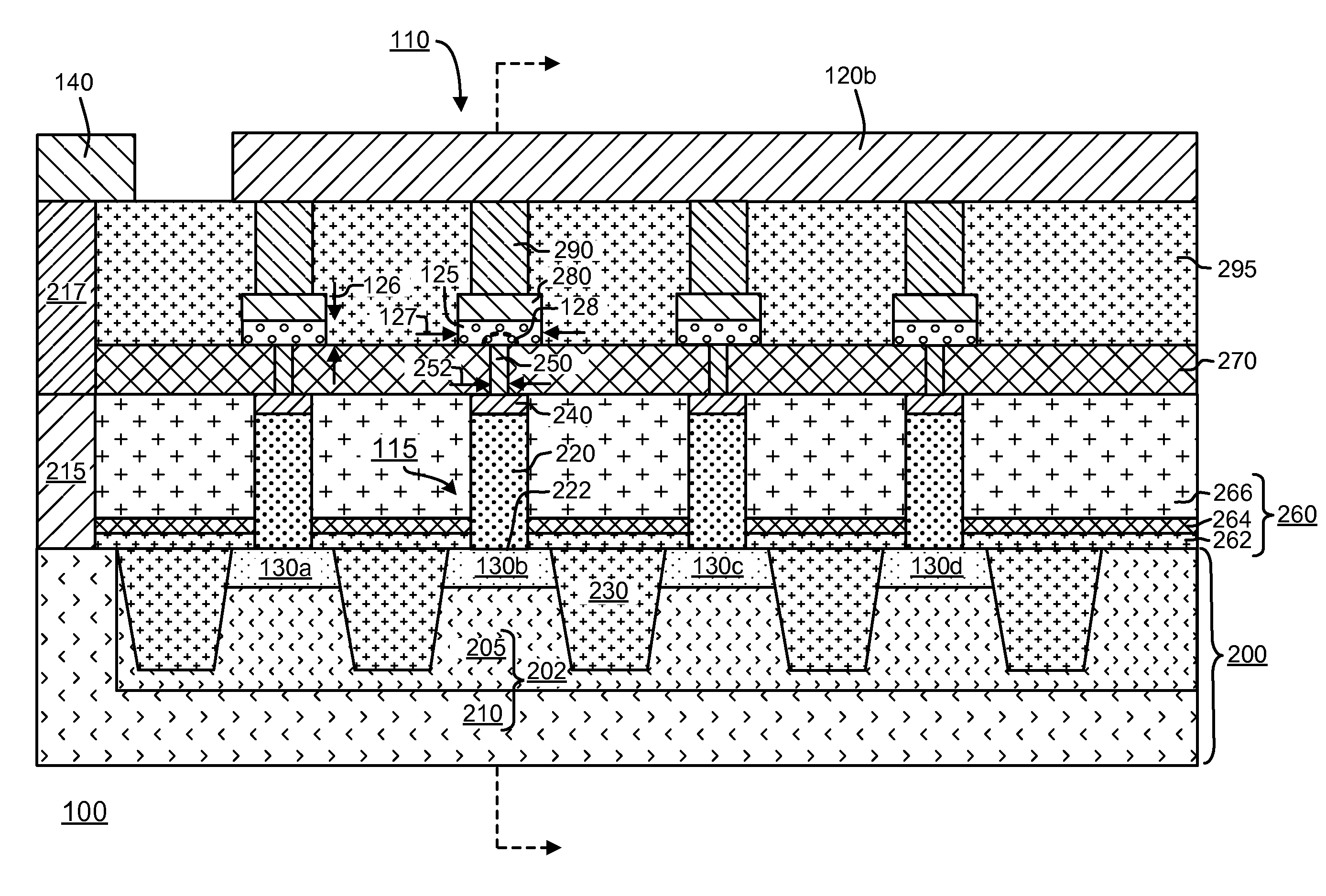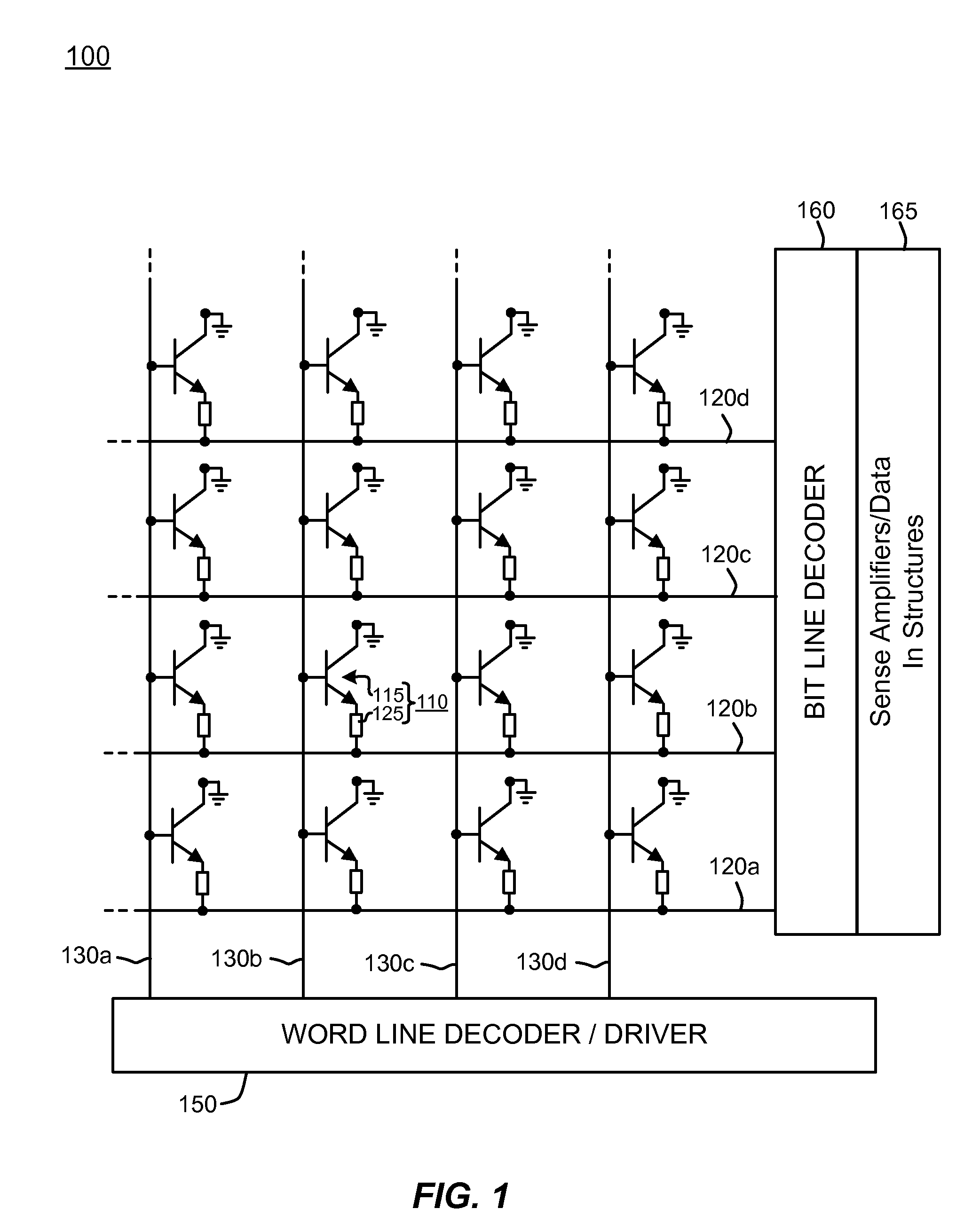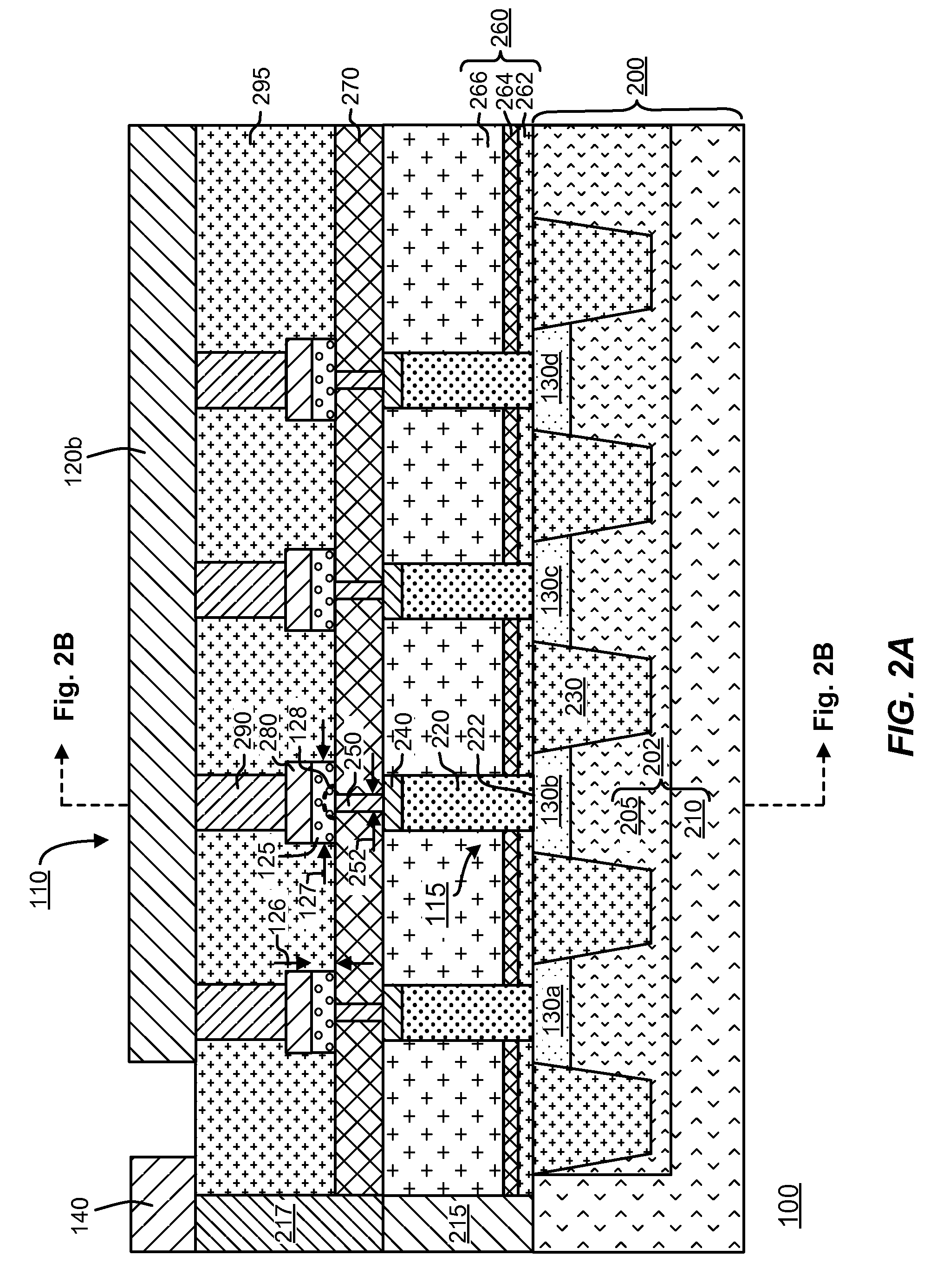Polysilicon plug bipolar transistor for phase change memory
a phase change memory and polysilicon plug technology, applied in semiconductor devices, digital storage, instruments, etc., can solve the problems of high complexity of design and manufacturing processes, inability to obtain the necessary current,
- Summary
- Abstract
- Description
- Claims
- Application Information
AI Technical Summary
Benefits of technology
Problems solved by technology
Method used
Image
Examples
second embodiment
[0051]FIGS. 3A and 3B illustrate cross-sectional views of a portion of memory cells (including representative memory cell 110) arranged in the array 100, FIG. 3A taken along the bit lines 120 and FIG. 3B taken along the word lines 130.
[0052]In the embodiment of FIGS. 3A and 3B the memory element 125 comprises a first portion 323 extending through dielectric layer 270 to contact the conductive cap 240, the first portion 123 being surrounded by the dielectric layer 270. The memory element 125 also includes a second portion 324 on the first portion 323. The memory element 125 couples the conductive cap 240 to the top electrode 280.
[0053]As can be appreciated, the active region 128 can be made extremely small in the illustrated structure, thus reducing the magnitude of the current needed to induce a phase change. The width 300 of the first portion 323 of the memory element 125 is less than that of the conductive cap 240 and the second portion 324 of the memory element 125, and preferabl...
third embodiment
[0054]FIGS. 4A and 4B illustrate cross-sectional views of a portion of memory cells (including representative memory cell 110) arranged in the array 100, FIG. 4A taken along the bit lines 120 and FIG. 4B taken along the word lines 130.
[0055]In the embodiment of FIGS. 4A and 4B the memory element 125 comprises a pillar of memory material extending through dielectric 270 to couple the conductive cap to the top electrode 280, the dielectric 270 surrounding the memory element 125.
[0056]As can be appreciated, the active region 128 can be made extremely small in the illustrated structure, thus reducing the magnitude of the current needed to induce a phase change. The width 400 of the memory element 125 is less than that of the conductive cap 240 and the top electrode 280, and preferably less than a minimum feature size for a process, typically a lithographic process, used to form the array 100.
[0057]This difference in width concentrates current in the small pillar shaped memory element 12...
fourth embodiment
[0058]FIGS. 5A and 5B illustrate cross-sectional views of a portion of memory cells (including representative memory cell 110) arranged in the array 100, FIG. 5A taken along the bit lines 120 and FIG. 5B taken along the word lines 130.
[0059]The embodiment of FIGS. 5A and 5B is similar to the embodiment of FIGS. 2A-2C, with sidewall conductors 510 on the sidewall surfaces of the word lines 130. In the illustrated embodiment the sidewall conductors 510 comprise a self-aligned silicide (salicide) containing, for example, Ti, W, Co, Ni, or Ta. The sidewall conductors 510 increase the electrical conductivity of the word lines 130 and thus reduce the loading of the word lines and improves the uniformity of the array.
[0060]Embodiments of the memory cells described herein include phase change based memory materials, including chalcogenide based materials and other materials, for the memory element. Chalcogens include any of the four elements oxygen (O), sulfur (S), selenium (Se), and tellur...
PUM
 Login to View More
Login to View More Abstract
Description
Claims
Application Information
 Login to View More
Login to View More - R&D
- Intellectual Property
- Life Sciences
- Materials
- Tech Scout
- Unparalleled Data Quality
- Higher Quality Content
- 60% Fewer Hallucinations
Browse by: Latest US Patents, China's latest patents, Technical Efficacy Thesaurus, Application Domain, Technology Topic, Popular Technical Reports.
© 2025 PatSnap. All rights reserved.Legal|Privacy policy|Modern Slavery Act Transparency Statement|Sitemap|About US| Contact US: help@patsnap.com



